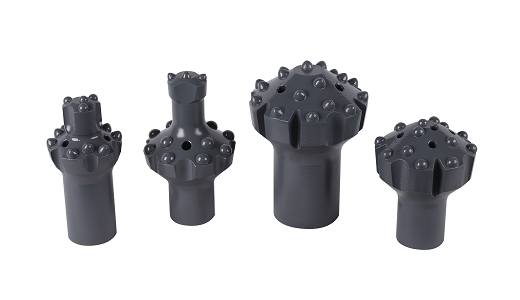Abstract:In the world of drilling, precision and efficiency are paramount. The extraction of resources from deep within the Earth...
In the world of drilling, precision and efficiency are paramount. The extraction of resources from deep within the Earth's crust demands specialized tools and techniques. Two integral components in drilling operations are the
reaming bit and the
drill pipe. In this article, we delve into the significance of reaming bits and their interaction with drill pipes, shedding light on a crucial aspect of drilling technology.

Reaming Bits: The Precision Sculptors
Reaming bits are an often-underestimated hero in the drilling process. They play a pivotal role in enlarging and shaping boreholes after initial drilling. This is essential for various reasons, including ensuring proper wellbore integrity, facilitating the installation of casing, and optimizing the flow of fluids and materials.
These bits come in various designs, including roller cone and fixed cutter types. The choice depends on the geological characteristics of the drilling site and the desired borehole diameter. Reaming bits are engineered to create a smooth and precisely sized hole, reducing friction and enhancing drilling efficiency.
Drill Pipe: The Backbone of Drilling
Drill pipes are the unsung heroes of any drilling operation. They are long, tubular components that transmit power from the surface drilling rig to the drilling bit at the bottom of the borehole. Made from high-strength materials like steel or aluminum, drill pipes must withstand extreme conditions, including high pressures, torque, and axial loads.
Drill pipes come in various sizes and specifications, and their selection depends on the depth and type of drilling required. They are connected in sections, forming a continuous conduit for the drill bit to reach the desired depth. Each connection is crucial, as any failure can result in costly downtime and potential damage to equipment.
The Symbiotic Relationship
The synergy between reaming bits and drill pipes is remarkable. Reaming bits are attached at the bottom of the drill string and perform their task as the drill pipe rotates. As they cut through rock formations, they create a precisely sized wellbore. This process, known as "reaming," ensures that the borehole is consistent with the drilling plan and the requirements of the project.
The choice of reaming bit is influenced by factors like the type of rock or sediment being drilled, the desired borehole diameter, and the required speed and precision. This highlights the critical nature of selecting the right reaming bit for the job. A well-matched reaming bit and drill pipe combination can significantly enhance drilling efficiency and reduce operational costs.
Challenges and Innovations
Drilling operations often encounter challenging geological conditions. Rock formations can vary in hardness, abrasiveness, and even fluid content. This variability requires continuous innovation in reaming bit design and drill pipe materials. Engineers and manufacturers strive to develop tools that can withstand these demanding conditions while maintaining precision and reliability.
In recent years, advances in materials science and manufacturing techniques have led to the development of reaming bits with improved durability and performance. Likewise, drill pipes are now manufactured with enhanced corrosion resistance and fatigue strength, extending their lifespan and reducing the frequency of replacements.
In the intricate dance of drilling, reaming bits and drill pipes are the skilled partners that ensure the success of the operation. The reaming bit, with its precision sculpting abilities, ensures that the borehole is just right, while the drill pipe, as the backbone of the operation, transmits power and torque to bring the drilling bit's vision to life.
This symbiotic relationship between reaming bits and drill pipes showcases the meticulous planning and engineering prowess that underpin drilling operations. As drilling technology continues to advance, the collaboration between these two essential components will remain at the forefront of achieving greater depths, efficiencies, and successes in the world of drilling.

 简体中文
简体中文 English
English España
España русский
русский
